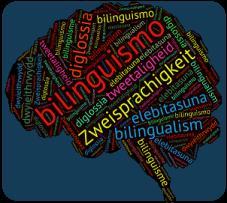This week our own Vince DeLuca will give his first invited talk about his research at the prestigious Donders Discussions meeting, which is organised by and for PhD students in cognitive neuroscience. His talk is scheduled for Friday morning, as part of the parallel session C4: Language control and monitoring which starts at 10 am. The title of his talk is:
A gradient of bilingualism: Investigating the effects of the bilingual experience on neural structure (see below for abstract)
More details about this event can be found here. See you all there!
…and of course, well done Vince!

Abstract:
Research suggests bi-/multilingualism changes brain structure and affects executive functions (Bialystok, 2016a, b). However, relevant connections are poorly understood and evidence across studies is inconsistent (García-Pentón et al., 2016). The incongruity likely stems, in part, from the inappropriate operationalization of bilingualism as a categorical variable whereby several potentially deterministic factors are conflated under a so-called single factor (e.g. second language age of acquisition (L2 AoA); Luk & Bialystok, 2013). It is likely that differential outcomes are modulated by relative weights of key (variable) factors pertaining to the L2 experience (Abutalebi & Green, 2016; Grundy et al., 2017), therefore, teasing them apart is crucial to understanding some current debates. The present study examines bilingualism as a spectrum: experience-based factors are assessed using a combination of behavioral and neuroimaging (MRI) methods. Bilingual participants living in the UK were scanned, completed an English proficiency test (the Oxford QPT; Geranpayeh, 2003), and a language background questionnaire (LSBQ; Luk & Bialystok, 2013). Demographics from the LSBQ, including length of L2 immersion, and L2 AoA, were run as predictors in analyses on the acquired neuroimaging data. Preliminary results suggest that changes in brain structure are tied to length of active usage of both languages.

